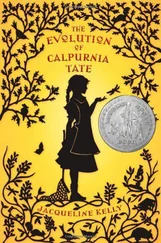In the history of Western nonmaterial culture, including religion and philosophy, the threat to the synthesized moderate middle ground from the Right has come from dualistic rationalism and especially from the influence of Plato. This influence has worked historically through Augustine of Hippo, who was a Platonist in philosophy although a Christian in religion. In the field of religion itself, this influence has given rise to dualistic heresies of which the chief, as might be expected, have appealed to Augustine. Augustine himself was not a heretic. He said, "Man is saved by God's grace," but he never said, "Man is saved by God's grace alone." Since the orthodox position (the middle ground) was that man was saved by God's grace and his own good works among his fellow men, Augustine's statement was incomplete but not Wrong (that is heretical). Only when this partial statement was accepted as a whole, complete, and final statement did it become heresy. But the tendency for the Rightest extremists to do this was very strong, and this tendency was most irresistible among those who were closest to the Augustinian tradition. Thus Luther, who was an Augustinian monk, did believe in salvation by grace alone, and the last great heresy (from the spiritual extremists) was Jansenism, which grew out of Jansen's book the Augustinus, a study of Augustine's theology (1632). This spread through figures like Pascal and the Port Royal group and was condemned as a heresy by the papacy in the bull Unigenitus in 1715.
Of course, the threat to the Western ideology based on synthetic moderation came equally, if not more, easily from the Left, from the materialists and nominalists. But this is a well-known story that needs to be mentioned here only because the loss of the ideology of Western civilization (like the earlier loss of the ideology of Classical civilization) will rest rather on the overemphasis on materialism and selfish individualism than it will on overemphasis of rationalism or spirituality.
In most civilizations, as we have already shown, there is a strong tendency for the basic ideology of the society to become lost and misunderstood during the Age of Conflict and to be abandoned totally in the Age of Decay. Since Western civilization has gone into an Age of Conflict three times, the threat to the society's ideology has been practically endemic. Anyone who wishes to recover this ideology can do so by reflecting on the word "moderation" or the expression "reconciliation of extremes" or, more abstrusely, on our maxim about the "unfolding of truth through social activity over time." When our old professor said of Goethe that he was "conciliatory," he was saying that he was a figure in the Western tradition; but when we say that Hitler was an extremist or a fanatic we are equally clearly excluding Hitler from the real Western tradition.
1. Mixture
The mixture of cultural elements that formed Western society came from four chief sources. One of these was Classical culture, whose greatest influence was in law, government, philosophy, and science. Another was the Semitic influence, which came largely through Christianity and the Jewish people and thus spread its effects largely in the field of religion and morality. The third influence, that of the barbarians, was a very diffused one, and is chiefly notable in social relations and technology; while the last, coming from the Saracens, consists mostly in incidental items and served also as an intermediary in the transfer of Classical influences. The creation of the new society was a lengthy and painful process in which the most vital changes occurred at opposite ends of the cultural spectrum in the areas of military technology and of religion. The religious influence, which we have already mentioned, served to divorce peoples' allegiance from Classical culture and to focus it on a new ideology for which men were willing to sacrifice their wealth, leisure, and safety. The military influence sprang from the need to find a method by which Christian groups could be defended from the onslaughts of pagan invaders.
A Christian society could arise and maintain itself only if its members could be defended against non-Christian intruders. The older, Classical military tactics had been based on infantry, fighting in compact masses and highly disciplined so that they could not be broken under enemy attack but rather would remain in alignment and position so that each individual could be at least partly covered by the shield and sword of his neighbor. This infantry technique, which had undergone only slight modifications in the long period from the Greek hoplites and Macedonian phalanxes to Roman legions, had become completely obsolete in the fourth century of our era before the impact of charging horsemen. The threat from these horsemen rested not only on their possession of mounts but also on the fact that these horses could be used day after day without resting because hoof-wear was prevented by iron horseshoes, and the impact of their lances on standing men was greatly increased by the use of stirrups. We do not know exactly when horseshoes and stirrups were introduced into the West, but it is certain that they were invented fairly early in the Christian period in the Northern Flatlands of Asia, probably by one of the Ural-Altaic-speaking peoples, and were introduced into Europe during the period of barbarian migrations. It is possible that the Huns had these innovations as early as the fourth century, and this may well explain the horrors these people evoked in the West. One of the chief reasons for the widespread fear of the Huns rested on their ability to travel very long distances in relatively short periods. This ability may well have been based on their use of horseshoes.
The new military tactic of mounted men fighting in loose groups armed with lances or spears required so much skill and training that fighting men had to be specialists, free to practice because they were supported economically by others. This requirement made it inevitable that the new Christian society must be a two-class society divided into those who fought from horseback and those who produced the food to support all persons and their animals. The fighting man in this organization was very expensive because his horses (he needed at least two), his arms, and his leisure to practice fighting were expensive. This meant that the ratio, in the society, between soil tillers and fighters would be high, something in the order of a hundred to one. The specialized fighters and the specialized toil tillers in this organization were very unequal in power, although, perhaps, not so overwhelmingly unequal as we might guess. When the organization reached its full development in the late eleventh century, the knight provided all the protection and the peasant (by then usually a serf) provided all the food. The knight needed food as much as the peasant needed protection, but the time ratio between these needs was to the advantage of the knight to such an extent that he could use his power against the peasant in the short run (to enforce obedience) so long as he did not injure the peasant's capacity to produce food in the long run. This power ratio of knight and serf was so great that it was possible for knights to force serfs to contribute to their support beyond the amount necessary for the expenses of protection alone. Accordingly, there was a flow of the economic necessities produced by the serfs into the possession of the knights. Thus the medieval knight became a surplus-creating instrument as well as an instrument of defense, a political power, and the upper class in the social system.
This complex organization on the military, political, social, and economic levels is called feudalism. It was supported by an economic organization of self-sufficient agricultural units called manors, and acted as the surplus-creating organization of the instrument of expansion of Western civilization in its first four stages. The whole system was supported by the economic production of the peasant. This latter relationship was so vital for the existence of the system that the peasant was legally forbidden to leave his position on the land and thus became a serf. On the whole, the peasant did not resist serfdom, since it gave him a secure status that provided protection and justice.
Читать дальше










